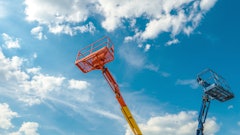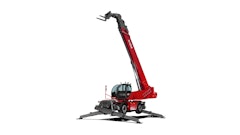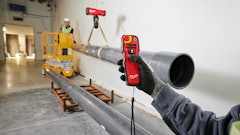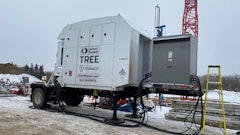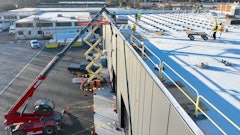
ANSI A92 MEWP Standards are finally close to publication, after another last-minute delay to allow committees to better explain why some of the latest round of comments were rejected, says Tony Groat
“The changes are significant and will require reading, understanding and implementing any requirements to meet your responsibilities as stated in the suite of standards.” – Tony Groat, IPAF North America Manager and ANSI Committee member
While it may sound like a broken record repeating, the new ANSI A92 Mobile Elevating Work Platform standards are finally close to publication. The latest hurdle was that procedurally there was insufficient or inadequate documentation as to the rationale for why some of the last round of comments were rejected.
While all comments were vetted and a rationale for each decision was expressed by the committees, the documented reasoning was not always detailed enough to allow those outside the committee to understand and impact their vote to approve or reject the new standard. A lesson learned and addressed as the comment documentation was updated and sent to the A92 consensus body for revote.
This vote was schedule for conclusion by June 28. The draft was then due to be sent to ANSI for its final approval and to ascertain that the standard adheres to a set of requirements or procedures known as the "ANSI Essential Requirements: Due process requirements for American National Standards", which govern the consensus development process.
When publication actually occurs, industry stakeholders will have 12 months to become compliant with the new standards for the design, safe use and training of MEWPs. One year after publication is known as the effective date of the standard, the date after all must comply with the requirements defined in the standards.
The changes are significant and will require reading, understanding and implementing any requirements to meet your responsibilities as stated in the suite of standards. Clearly manufacturers must address the requirements in the A92.20 design standard. This standard contains the structural design calculations and stability criteria, construction, safety examinations and tests that shall be applied before a MEWP is first put into service. Users and operators do not have any responsibilities within this standard and can leave it to the MEWP manufacturers to address.
A92.22 is know as the safe-use standard and as the name implies it specifies requirements for application, inspection, training, maintenance, repair and safe operation of MEWPs. MEWP owners must properly maintain the MEWP, users/employers must ensure all personnel whom they direct to work with or on MEWP operations are qualified to perform all of the task required and operators must be trained in compliance with this standard regarding the inspection, application and operation of MEWPs (including recognition and avoiding of hazards associated with their operation) shall be authorized to operate a MEWP.
A92.24 is known as the training standard and provides methods and guidelines to prepare MEWP training materials, defines administrative criteria, and delivers elements required for proper training and familiarization. This is much more detailed than prior standard offering 11 topics that must be addressed in general operator training.
Training must be delivered in a language the trainee can understand and the user must ensure the operator of a MEWP is physically and mentally capable to operate the MEWP safely. The content of Theory (Classroom/Online) and Practical (Hands‐On) Training, qualification for trainers, requirements for classroom and practical evaluations, and documentation are newly stated requirements. Training now also includes occupant knowledge and supervisor training
IPAF urges all MEWP industry professionals to take advantage of the next 12 months to take action to ensure they will be compliant on or before the effective date. IPAF can help companies or individuals get compliant, through training, technical or safety advice and through its range of technical and safety leaflets, posters and campaign materials.



